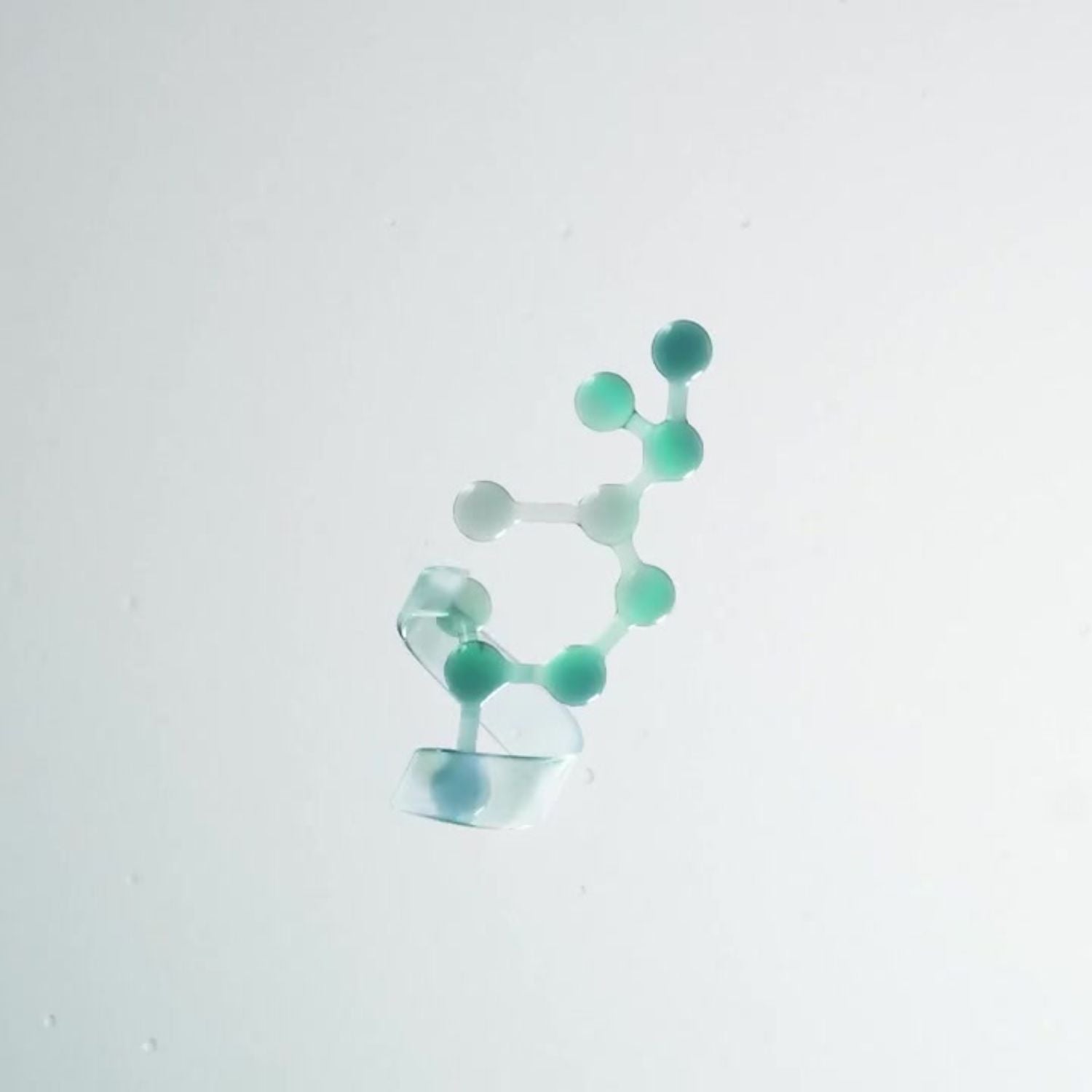What is Hormonal Acne: Understanding the Basics
Hormonal acne,as the name suggests, is closely tied to hormonal fluctuations. Variations in hormones such as estrogen and testosterone trigger the overproduction of sebum, a mixture of natural fats and oils produced by the skin.2 This can lead to oily skin, acne-prone skin, clogged pores, and acne.
Identifying Hormonal Acne Patterns: Where and How It Appears
Where does hormonal acne appear? If you know what you’re looking for, hormonal acne is fairly easy to spot. It typically causes oily skin, blackheads, whiteheads, pimples, and deep, cystic bumps primarily on the jawline, chin, and sometimes the neck and shoulders .3 While bacterial acne can be mostly superficial, the deep cystic acne caused by hormones can be particularly painful; it can also lead to scarring if not properly managed .4
If you typically break out at a certain time in your menstrual cycle, you're likely dealing with hormonal acne. Hormonal acne can also coincide with pregnancy, perimenopause, menopause, or hormonal imbalances like polycystic ovary syndrome (PCOS).
Root Causes and Triggers of Hormonal Acne
Fluctuating Hormonal Levels

Stress
- Cortisol sends your body into flight or fight mode.
- Fight or flight floods the blood with glucose to provide your body with energy.
- When that glucose isn’t utilized, blood sugar is reduced with insulin.
- Insulin production leads to androgen production.
- Androgens trigger an overproduction of sebum, clogging pores and priming the skin for acne outbreaks.
Furthermore, high cortisol levels also inhibit estrogen, which is known to suppress sebum production. 7
Diet
Eating unhealthy, acne-triggering foods is one of the main ways to welcome a hormonal breakout. Try to avoid high-glycemic foods rich in sugar, such as refined carbohydrates. These can spike your blood sugar levels, increasing insulin production. Elevated insulin levels stimulate testosterone production, increasing sebum production and thus the likelihood of acne.8
Dairy products have also been known to cause acne and worsen its severity, possibly due to hormones present in milk.8
Supporting Skin Health in Hormonal Acne

A Balanced Diet
In addition to avoiding acne-causing foods rich in sugar and dairy, you can also consume foods that reduce the symptoms of acne. Foods rich in fatty acids, such as salmon, flaxseeds, and walnuts, can help regulate inflammation and strengthen the skin barrier without causing unwanted sebum buildup .11 Finally, incorporate foods such as high-fiber fruits, vegetables, and whole grains into your diet that prevent acne-causing damage by feeding your skin with complex carbohydrates that don't spike blood sugar while supplying vital nutrients and antioxidants to the skin that help balance hormones .11
Lifestyle Habits to Manage Stress
Since stress affects the skin and is such a strong variable in determining the presence and severity of hormonal acne, incorporating stress-reducing practices into daily life can have a significant impact on acne severity. One of the best stress-relieving activities is regular physical activity. Exercise not only minimizes stress by releasing endorphins but can also prevent inflammatory acne by lowering high blood sugar levels that are linked to hormonal acne .8 Stress can also be alleviated through lifestyle practices. Improving your sleep schedule can help alleviate some of the stress which directly leads to acne-triggering hormonal imbalances.
Gentle Skincare Routines
-
Cleanser - Begin with a mild, gentle exfoliating cleanser
, like PREP, in the morning and evening to purify the skin and eliminate surplus sebum without harming the skin's natural balance.9
- Toner - Enhance your skin's clarity by using a toner designed for acne-prone skin, which removes any residues left by your cleanser. Select a formula that suits your skin's specific needs.
-
Moisturizer - It's crucial to hydrate and rejuvenate your skin post-cleansing, but it's equally important to avoid introducing impurities that could clog pores. Opt for a light, oil-free face moisturizer
that doesn't contain pore-clogging ingredients. OS-01 FACE is a great one to try.9
- Sunscreen - Conclude your routine by shielding your skin from harmful UV rays that could exacerbate acne. Choose a broad spectrum sunscreen suitable for all skin types that doesn’t cause irritation or breakouts, such as OS-01 SHIELD. Pro tip: Zinc oxide is a mineral SPF ingredient that is antibacterial, anti-inflammatory, and an astringent that can help control oil levels in the skin.
-
Exfoliate -
Employing physical and chemical exfoliation clears pores and prepares the skin for renewal, contributing to long-term skin health. However, excessive exfoliation can strip away essential oils from the skin barrier, leading to irritation. Limit exfoliation to three or four times weekly and postpone it if your skin is healing from a breakout.10
- Hormonal acne is closely linked to fluctuations in hormones like insulin, estrogen, and testosterone. This can lead to overproduction of sebum and result in oily, acne-prone skin.
- Hormonal acne typically occurs on the jawline, chin, and sometimes neck and shoulders. It’s also known for causing painful, deep cystic bumps that can easily scar.
- Diet and stress play significant roles in triggering hormonal imbalances, which can exacerbate hormonal acne.
- Addressing hormonal acne requires a holistic approach that includes dietary changes, stress management, and a topical skin care treatment tailored to reducing sebum production and inflammation.
- Foods rich in fatty acids and antioxidants can help balance hormones and support skin health, while a gentle skincare routine using non-comedogenic products is crucial in managing symptoms and preventing breakouts.



